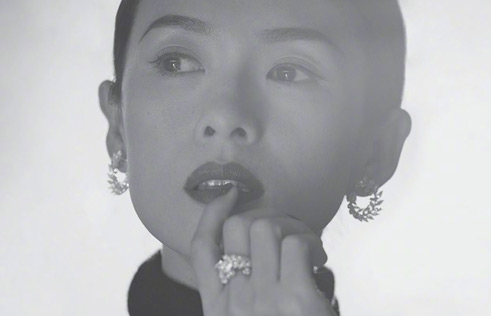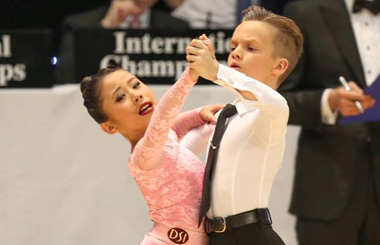Red and yellow: the mystery of Tibetan Buddhism architecture
Tibetan residents seldom paint their houses yellow or red. Only temples and Buddhists’ residences are eligible for “yellow exteriors” and the average residences and country huts are painted white.
| ?
 Potala Palace in Lahsa , Tibet |
On a starry night 300 years ago, Tsangyang Gyatso, Dalai Lama VI, was meandering through Lhasa’s streets as usual when he first met Makye Ame and fell in love with her at first sight.
Tsangyang wrote beautiful poems for the woman and they dated in a “yellow house.” Several hundred years later, only the poems and the place where they first met remained. People painted it yellow because of Tsangyang’s presence there. The uniquely colored house stood alone on Bakuo Street, attracting tourists’ attention.
The normal color for Tibetan residences is white with black trimming, each color worshipping a fairy. White is used to worship Bainian Fairy, celebrating its loftiness and sacredness. Living among the snowy mountains, Tibetan people drink white milk, worship white khatags and live in white houses. White is also a very practical color as it can resist the ultra-violet radiation on the plateau. The black color is for worshipping the Heinian Fairy. Tibetan residents use black boldly on the walls, doors, windows, and even walls outside the yards。
Yellow and red seldom occur in the general Tibetan population’s residences, but they occur frequently in temples and monks’ garments. The yellow house on Bakuo Street owes its color to Tsangyang Gyatso.
Why are red and yellow so special in Tibet? What roles do they play in Tibetan Buddhism? A famous living Buddha architect wandered with me amongst the temples and residences, and discovered the secrets of red and yellow.
The language of red
When yellow is combined with red, the joy of life is conveyed silently. In the western world, Van Gogh delivered this positive meaning to its highest point in “Sunflowers.” In the eastern world, Tibetan Buddhism combines the two colors perfectly. The two colors are deified, like the dignified facial expression of the Buddha.
According to historical documents, Tibetan people like the color red for two reasons.
Some say Tibetan ethnicity is derived from nomadic groups. In some of the remote pastoral regions, one can still hear people saying “Are there any red things?” Here, “red” denotes beef and mutton. As time passed, pastoral people built up houses and farmed the lands, and red became one of their favorite colors.
The second reason is directly related to religion. According to a primitive religion called “Bon Religion,” the universe is divided into the three worlds, belonging to God, humans and ghosts respectively. To protect themselves from ghosts, people painted their faces red. With the passing of time and transformation of people’s beliefs, red paint was used on buildings instead of their faces. The use of red is strictly confined to temples, pavilions and important walls.
Today, one can still see the importance of red in Tibetan religious architecture. The Potala Palace has a white palace and a red one,. Dalai Lama resides in and deals with political and religious matters in the white palace. The red palace is where people worship the late Dalai. As the center of the Potala Palace, the red palace is the soul of the architecture complex.
Red and yellow, the mystery of Tibetan Buddhism architecture
Red is the symbol of bravery. Nowadays, people paint red on the temple walls in deference to ancient people painting red on the tombs.
Red is the color of blood. The ancient Bon religion in Tibet involved the slaughter of thousands of animals to worship a deity. Tibetan Buddhism reflects this tradition, and paints all the religious infrastructures red.
Red is the symbol of bravery. It is said that the painted red tomb on Mount Qiongjiezong is the tomb of Princess Wencheng.
There are also Tibetan buildings painted in yellow including temples and reading rooms. The earliest yellow infrastructure recorded is the “Buzi Golden Pavilion.” As we can see from these examples, yellow is important to Buddhism.
Buildings of significance are mostly painted in yellow such as the hall in which people celebrate the Dalai Lama’s birthday. The most important halls and pavilions in the temples are always painted in yellow such as the main hall of Qiangba Temple, Minzhulin Temple. The house on Bakuo Street is painted yellow to commemorate Tsangyang Gyatso.
Sacred color of the monk costume
According to historic documents, even a patch of yellow on the clothes of an average person caused people to salute him. It tells us that yellow was an exclusive color for monks. Monks wore yellow costumes to distinguish themselves from the “Zan” and “Zanpu,”,government officials who wore red uniforms.
An ancient story tells how yellow became the sacred color of Buddhism. When Prince Sakyamuni, the founder of Buddhism, left the throne to live a simple and thrifty life, he wore the white cloth that was used to wrap dead bodies. The cloth was tanned by the sun and moistened by the rain, and became wheat colored.
Yellow was slowly replaced by red because Tibetan ethnicities increased their exchanges with Han ethnicities. To differentiate from the yellow that the royal family used, they changed into dark colors. Dark red is a mixture of red and black.
Today, Tibetan Buddhist monks normally wear red costumes. Yellow ones are seldom worn. Dark red costumes are frequently seen in Tibet because it’s Tibetan Buddhism’s special color.
Many say that colors are used to distinguish the sects of Buddhism. But that is incorrect as Tibetan Buddhist monks wear red monk costumes and only habited men are allowed to wear yellow gowns.


















